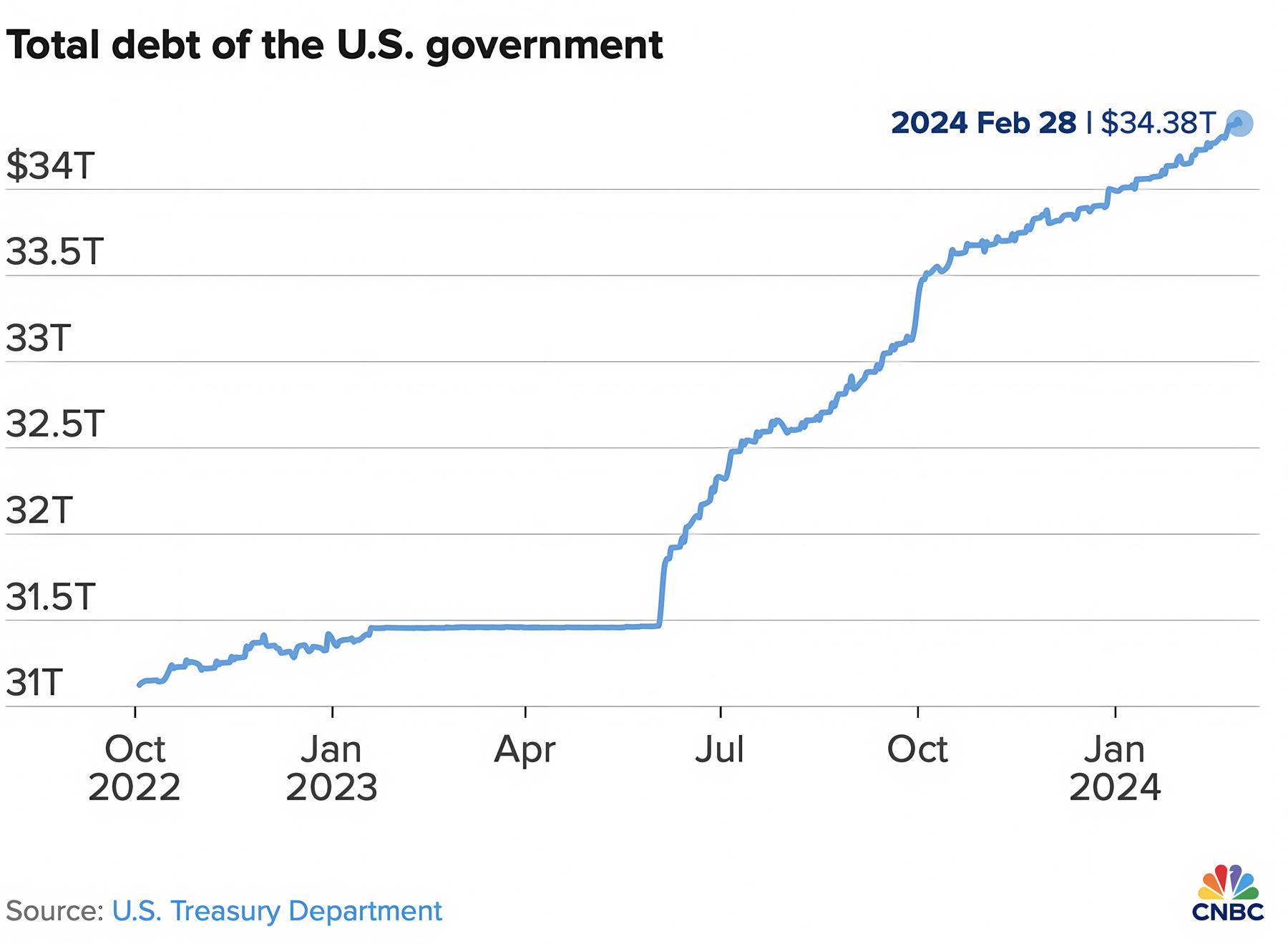By Michelle Fox for CNBC
The debt load of the U.S. is growing at a quicker clip in recent months, increasing about $1 trillion nearly every 100 days.
The nation’s debt permanently crossed over to $34 trillion on Jan. 4, after briefly crossing the mark on Dec. 29, according to data from the U.S. Department of the Treasury. It reached $33 trillion on Sept. 15, 2023, and $32 trillion on June 15, 2023, hitting this accelerated pace. Before that, the $1 trillion move higher from $31 trillion took about eight months.
U.S. debt, which is the amount of money the federal government borrows to cover operating expenses, now stands at nearly $34.4 trillion, as of Wednesday. Bank of America investment strategist Michael Hartnett believes the 100-day pattern will remain intact with the move from $34 trillion to $35 trillion.

“Little wonder ‘debt debasement’ trades closing in on all-time highs, i.e. gold $2077/oz, bitcoin $67734,” he wrote in a note Thursday.
Spot gold is currently hovering around $2,084 an ounce, while bitcoin was recently around $61,443. The cryptocurrency in February closed out its best month since 2020, briefly trading above $64,000 on Wednesday before pulling back. Inflows into crypto funds are on course for a “blowout year,” with an annualized inflow of $44.7 billion so far this year, Hartnett noted.
Moody’s Investors Service lowered its ratings outlook on the U.S. government to negative from stable in November due to the rising risks of the country’s fiscal strength.
“In the context of higher interest rates, without effective fiscal policy measures to reduce government spending or increase revenues,” the agency said. “Moody’s expects that the US’ fiscal deficits will remain very large, significantly weakening debt affordability.”



